Lyza Danger Gardner - JavaScript on Things: Hardware for Web Developers
Here you can read online Lyza Danger Gardner - JavaScript on Things: Hardware for Web Developers full text of the book (entire story) in english for free. Download pdf and epub, get meaning, cover and reviews about this ebook. year: 2018, publisher: Manning Publications, genre: Home and family. Description of the work, (preface) as well as reviews are available. Best literature library LitArk.com created for fans of good reading and offers a wide selection of genres:
Romance novel
Science fiction
Adventure
Detective
Science
History
Home and family
Prose
Art
Politics
Computer
Non-fiction
Religion
Business
Children
Humor
Choose a favorite category and find really read worthwhile books. Enjoy immersion in the world of imagination, feel the emotions of the characters or learn something new for yourself, make an fascinating discovery.
- Book:JavaScript on Things: Hardware for Web Developers
- Author:
- Publisher:Manning Publications
- Genre:
- Year:2018
- Rating:3 / 5
- Favourites:Add to favourites
- Your mark:
JavaScript on Things: Hardware for Web Developers: summary, description and annotation
We offer to read an annotation, description, summary or preface (depends on what the author of the book "JavaScript on Things: Hardware for Web Developers" wrote himself). If you haven't found the necessary information about the book — write in the comments, we will try to find it.
Summary
JavaScript on Things is your first step into the exciting and downright entertaining world of programming for small electronics. If you know enough JavaScript to hack a website together, youll be making things go bleep, blink, and spin faster than you can say nodebot.
Purchase of the print book includes a free eBook in PDF, Kindle, and ePub formats from Manning Publications.
About the Technology
Are you ready to make things move? If you can build a web app, you can create robots, weather stations, and other funky gadgets! In this incredibly fun, project-based guide, JavaScript hardware hacker Lyza Danger Gardner takes you on an incredible journey from your first flashing LED through atmospheric sensors, motorized rovers, Bluetooth doorbells, and more. With JavaScript, some easy-to-get hardware, and a bit of creativity, youll be beeping, spinning, and glowing in no time.
About the Book
JavaScript on Things introduces the exciting world of programming small electronics! Youll start building things immediately, beginning with basic blinking on Arduino. This fully illustrated, hands-on book surveys JavaScript toolkits like Johnny-Five along with platforms including Raspberry Pi, Tessel, and BeagleBone. As you build project after interesting project, youll learn to wire in sensors, hook up motors, transmit data, and handle user input. So be warned: once you start, you wont want to stop.
Whats Inside
- Controlling hardware with JavaScripti
- Designing and assembling robots and gadgets
- A crash course in electronics
- Over a dozen hands-on projects!
About the Reader
Written for readers with intermediate JavaScript and Node.js skills. No experience with electronics required.
About the Author
Lyza Danger Gardner has been a web developer for over 20 years. Shes part of the NodeBots community and a contributor to the Johnny-Five Node.js library.
Table of Contents
PART 1 - A JAVASCRIPTERS INTRODUCTION TO HARDWARE- Bringing JavaScript and hardware together
- Embarking on hardware with Arduino
- How to build circuits
- Sensors and input
- Output: making things happen
- Output: making things move
- Serial communication
- Projects without wires
- Building your own thing
- JavaScript and constrained hardware
- Building with Node.js and tiny computers
- In the cloud, in the browser, and beyond
Lyza Danger Gardner: author's other books
Who wrote JavaScript on Things: Hardware for Web Developers? Find out the surname, the name of the author of the book and a list of all author's works by series.

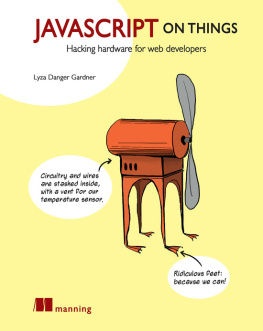

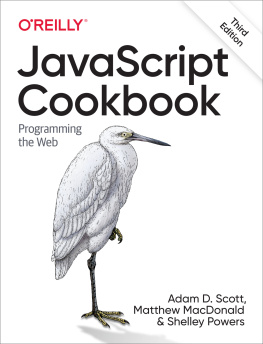
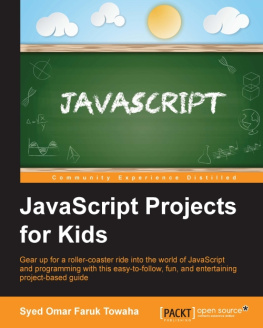
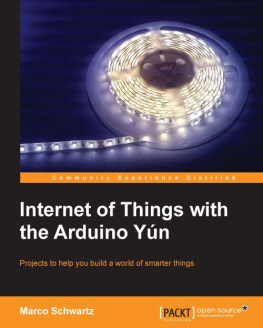

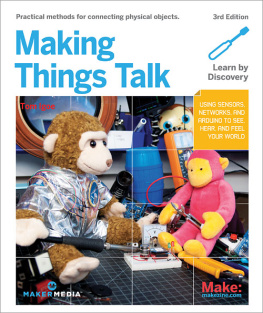
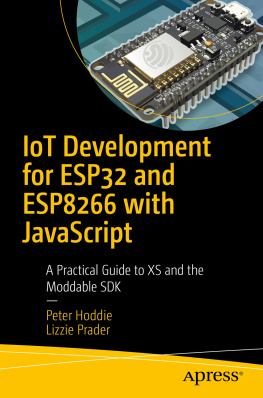
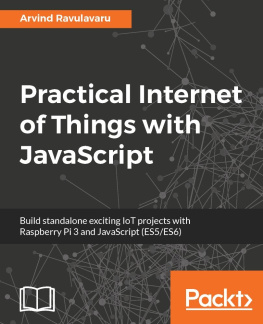

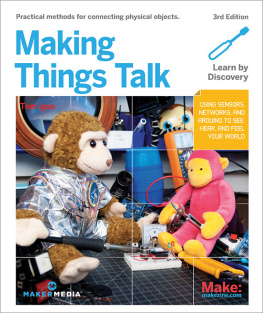
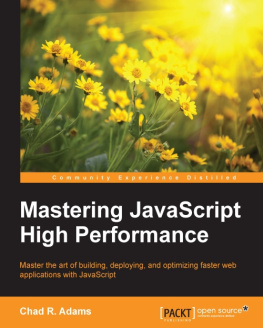

 Recognizing the importance of preserving what has been written, it is Mannings policy to have the books we publish printed on acid-free paper, and we exert our best efforts to that end. Recognizing also our responsibility to conserve the resources of our planet, Manning books are printed on paper that is at least 15 percent recycled and processed without the use of elemental chlorine.
Recognizing the importance of preserving what has been written, it is Mannings policy to have the books we publish printed on acid-free paper, and we exert our best efforts to that end. Recognizing also our responsibility to conserve the resources of our planet, Manning books are printed on paper that is at least 15 percent recycled and processed without the use of elemental chlorine.